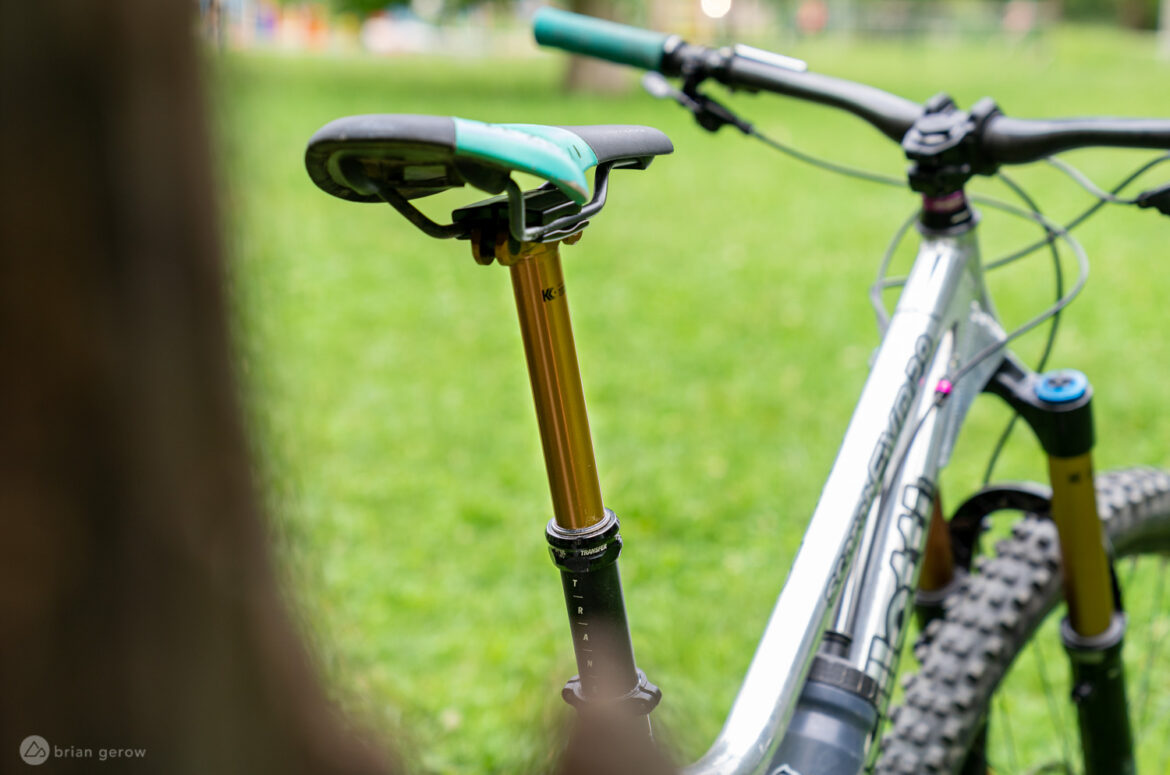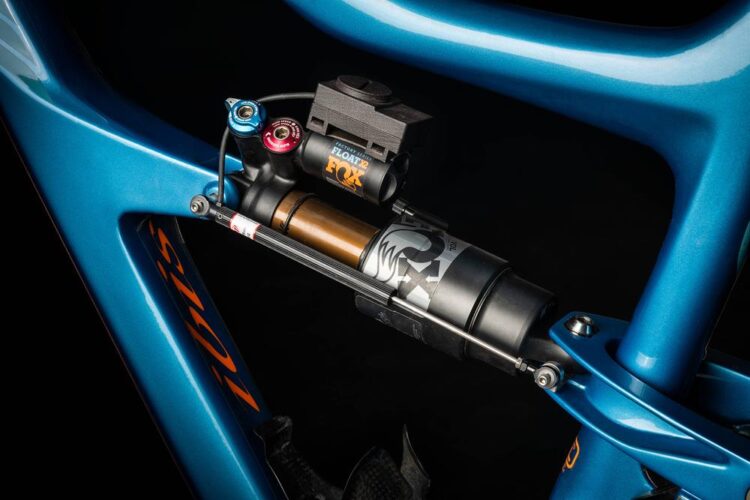
Mountain bike forks, shocks, and dropper seat posts are designed so well right now that we have to hunt for flaws and nuances while testing them. Most brands make a fork and shock with minimal adjustment for the “set it and forget it” rider to accompany a tunable tinkerer’s delight that’s littered with knobs and valves. As former XC and enduro pro Adam Craig is fond of saying, “it’s a great time to be a mountain biker.”
Could things get even better? We asked industry veteran, Tyrone Dines, who currently works for Fox Europe what he would do differently with single-crown forks, air shocks, and seat posts if he had his druthers, or, as Ty pits it, if he built “Unicorn Factory” suspension. Ty also worked on the World Cup race truck with RockShox for a number of years, so he knows the squishy bits well. We’ll start up front with the fork, separating the air spring, damper, and chassis components to get all the details.

When asked about the ideal Unicorn Factory fork chassis, Ty had a split response. He said that the truly ideal fork chassis would be considered upside-down compared to conventional forks, with the stanchions at the base like a motorcycle. This would allow for the somewhat heavier elements of the fork to sit lower in the bike, improving its center of gravity. Oil baths and other important elements would also function well with gravity keeping things properly lubed.
A reversed fork would allow the steerer and upper tubes to be made from a single piece of material, eliminating the creaking issues that most modern forks eventually succumb to. Italy’s Extreme Shocks eliminated some of the creaking steerer tube cries by extending the fork’s crown up the tube for a more secure connection. The rub is that all of that energy still has to go someplace, and creaking stanchion tubes are next in line. A solid upper would potentially solve all of these woes.
Despite the potential benefits, very few companies are willing to make a flipped stanchion fork because the axle and hub have to be far larger to stiffen the overall chassis. No one wants another hub standard, or a wheel that only works in one fork, nor a heavier front end. You might recall an XC race fork that RockShox created back in 2014 called the RS-1. The fork was well received in some functional regards, particularly stiffness, but it weighed more than the previous SID, required a proprietary hub, and ate about twice as much from your wallet. There have been few attempts since.
Given those considerations, Ty said that the better option would likely be to stick with the existing stanchion configuration, and dial in the internals — though he would work to silence the inevitable crying fork crown.

On the air spring side of things, Ty laid out a number of useful improvements for the Unicorn Factory fork. He would essentially provide a base tune that folks could just go ride right out of the box, and a massive array of tuneability for racers and tinkerers alike. For starters, the air spring would include an externally adjustable main chamber volume. Instead of opening the fork up to swap in spacers, it would have a dial at the top of the left leg to fine tune the progression and bottom-out characteristics.
The negative chamber would also be infinitely adjustable. Riders could drop the lowers to open the chamber up further, and Ty says he would try to create an external adjustment to expand the chamber and add small bump compliance without opening the fork up. This adjustment would be an important selling point for lightweight riders who struggle to set their stock forks up with enough sensitivity. With the expandable negative chamber they would be able to dial the fork in with zero stiction, to provide the same ride characteristics that most forks offer the 160-190lbs riders they are designed for.
Finally, on the air side of things, what about travel adjustment? While some mainstream forks require a full air spring swap, and others allow the owner to adjust travel by exchanging spacers on the air sleeve, all modern forks require disassembly to change travel. If you want to add travel for a particularly steep track, or mount the fork on a shorter travel bike, it would be ideal to have externally available travel adjustments. Ty says that this could be possible through a few different systems, likely with an adjuster at the dropout that moved the travel in 5mm increments from 150mm to 170mm.
External travel adjustments have been around for a while on forks like the Fox Talas and some early RockShox Pike models, and having worked with those mistakes, Ty says that it could be done much better.

For the damper, Ty mentioned another dual approach, with a simple settings guide and options for nearly infinite adjustability. A majority of riders don’t want to fiddle with their forks, and certainly don’t have any interest in taking them apart. For that crowd, things would be dead clear and dialed to suit the largest swath of styles and needs — which is the approach many suspension companies are currently taking. Then, for those of us who like to take things apart and make them better, the panoply of options would be adjustable to suit every different trail style and race format.
The main shift Ty would introduce is a removable damper with easily swappable compression tunes to give riders the power of precise damping that would suit their mood and race conditions. The tune could be swapped to something lighter if things get muddy, or riders could have a set of tested tunes for running 29″, 27.5″, or mixed wheels. This element is fairly racer specific and would help folks at the sharp end of the speed spectrum feel prepared for everything. Privateer riders might benefit most from a setup like this since they don’t have mechanics to take their forks apart and move shims around. A cartridge that could be popped out with a hex-key and a handful of pre-set tunes to change out would give them a lot more time on the track and less in the pits.

Now for the rear squisher. For the most part, he wants to make shock tuneability easier and more accessible. “For example, in some shocks, you can depressurize the IFP. Then you can change little cartridges to tune your compression or rebound. It’s done a lot in motocross. Then, on the main piston side, it’s really difficult to do anything other than what’s being done now. To adjust the main piston the shock has to come apart. But there are ways to make things a little easier. A hydraulic bottom out would also be great. Especially with the coil, because it’s linear, you want something to hold you up toward the end of the stroke.”
From there, it’s all about the electronics. Creating a system like Fox Live Valve where a race mechanic could make some key adjustments on a laptop in the pits would be sweet. “I would make it so that you could add in or remove certain elements without having to pull the shock apart. Not necessarily on the fly.”

Finally, I asked about the seat post, and Ty again looked toward an electrical system to clean things up. “I would make them as short as possible, which is difficult because people want so much travel from a dropper these days. I would look at a system where you don’t have a cable. And you need to keep them as light as possible, even for big enduro setups.”
“Having the ability to buy one post to use on different bikes would also be great. I would like to make it so you could just pull the bottom of the post off and screw another one on for a different size seat tube. Just unscrew it and screw on another one. Job done.”

So there you have it. The Unicorn Factory suspension would be simpler to work with for everyone, and more versatile for riders who want fine tuning capabilities. We’ll be chatting with a variety of suspension techs about similar topics so please let us know in the comments if there’s something you want to learn more about.





















5 Comments
Aug 28, 2020
I recently started running a Wren inverted fork and must say I'm very impressed, especially given the price-point.
I ran a Wren inverted fat fork years ago on their first generation single chamber and the overall experience was better than a Rockshox Bluto but fairly uninspiring.
I tried them out again this fall on the fattie and was blown away at how much the company's suspension has progressed. It seems they've adapted much of the design concepts talked about in this article.
I purchased the wren fork for the fattie but now am replacing my fox 34 and pike on my MTBs because I like them so much.
https://wrensports.com/product/inverted-mtb-suspension-fork/
Aug 28, 2020
Dec 25, 2021
Aug 29, 2020
Aug 29, 2020
Since Ty currently works for Fox, all of the secrets around Unicorn Factory goods will have to remain secrets. Sorry.
Here's my take, based on the suspension I've tested. If you're looking for the ability to swap between a variety of tunes in the fork damper, and want an infinitely tuneable dual-chamber air spring, the Selva R from Formula offers all of that goodness. I am currently testing their coil setup and it's hard to think of a fork that feels better -- though the Ohlins RXF 36 is also quite tuneable and fluid smooth.
If you're after a fork crown that doesn't creak, the new EXT Era is the only one directly addressing the issue. I have a hunch that others will follow suit.
Now to put all of those sweet elements together.
In the shock department, Live Valve definitely ticks a lot of the boxes Ty mentioned, and the EXT Storia shock also covers a handful of the key bases.